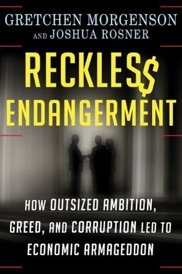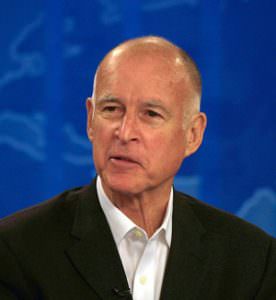A Road Map to Economic Armageddon
In "Reckless Endangerment," Gretchen Morgenson and Joshua Rosner argue that cozy connections between government and the financial industry were the primary cause of the financial crisis.
This review is from a syndication service of The Washington Post.
In “Reckless Endangerment,” Gretchen Morgenson and Joshua Rosner argue that cozy connections between government and the financial industry were the primary cause of the financial crisis. While many economists — including this reviewer — have argued that government actions caused the crisis, Morgenson and Rosner use their investigative skills to dig down and explain why those actions were taken. The book focuses on two government agencies, Fannie Mae and the Federal Reserve.
The mutual support system is better explained and documented in the case of Fannie, the government-sponsored enterprise that supported the home mortgage market by buying mortgages and packaging them into marketable securities, which it then guaranteed and sold to investors.
Reckless Endangerment: How Outsized Ambition, Greed, and Corruption Led to Economic Armageddon
By Gretchen Morgenson, Joshua Rosner
Times Books, 352 pages
The book gives examples of Fannie’s executives — Jim Johnson, chief executive from 1991 to 1998, is singled out most — using excess profits to support government officials in a variety of ways, with plenty left over for large bonuses. They got jobs for friends and relatives of elected officials, including Rep. Barney Frank (D-Mass.), who is tagged as “a perpetual protector of Fannie.” They made campaign contributions and charitable donations to co-opt groups such as the community action organization ACORN, which “had been agitating for tighter regulations on Fannie Mae.” They persuaded executive branch officials — such as then-Deputy Treasury Secretary Larry Summers — to ask their staffs to rewrite reports critical of Fannie.
Fannie’s lobbying efforts were resisted by some government officials, who are the heroes of the book. Congressional Budget Office Director June O’Neill is praised for refusing to stop the release of a 1995 study by CBO staffer Marvin Phaup showing that federal support increased Fannie’s profits by $2 billion. Another hero is “none other than John W. Snow, the Treasury secretary,” who in 2003 “urged the creation of a new federal agency to regulate and supervise the financial activities of the government-sponsored enterprises.” (From 1995 to 2001, I was on the CBO’s Panel of Economic Advisers but was not involved in the CBO study. From 2001 to 2005, I was undersecretary of the Treasury for international affairs, and Fannie Mae issues were not part of the international division.)
The Fed takes a beating throughout the book. Early on, the authors take on the Boston Fed, and in particular its research director, Alicia Munnell, for using a study documenting racial discrimination in mortgage lending to justify the relaxation of credit standards, even though other researchers found the study’s findings to be flawed. The book claims that “the banks knew they held all the cards” when Timothy Geithner became president of the New York Fed in 2003. It says that financier Sandy Weill “cultivated Geithner” and approached him about running Citigroup, and it reminds us that “even as Citigroup was building up its hidden off-balance sheet risks in 2006, its overseers at the New York Fed did nothing to rein the bank in.”
|
To see long excerpts from “Reckless Endangerment” at Google Books, click here. |
The book certainly does not let the private sector off the hook, but it is very hard to imagine that heavily regulated banks could have engaged in such extreme risk-taking without the support of regulators. Nobel Prize-winning economist George Stigler warned long ago about “regulatory capture” — the tendency for regulated firms to get protection from their regulators — and the authors provide considerable evidence of it. Though they do not always give sources, it is important to take such claims and evidence seriously and to introduce government reforms as necessary. This, unfortunately, has not happened yet, as the authors emphasize in the conclusion, pointing to “the irony of having two of the nation’s most strident defenders of Fannie Mae sponsoring” the Wall Street Reform and Consumer Protection Act of 2010 — which did not reform Fannie Mae.
John B. Taylor, a professor of economics at Stanford University and a senior fellow at Stanford’s Hoover Institution, is the author of “Getting Off Track: How Government Actions and Interventions Caused, Prolonged and Worsened the Financial Crisis.” He blogs at Economics One.
(c) 2011, Washington Post Book World Service/Washington Post Writers Group
Your support matters…Independent journalism is under threat and overshadowed by heavily funded mainstream media.
You can help level the playing field. Become a member.
Your tax-deductible contribution keeps us digging beneath the headlines to give you thought-provoking, investigative reporting and analysis that unearths what's really happening- without compromise.
Give today to support our courageous, independent journalists.







You need to be a supporter to comment.
There are currently no responses to this article.
Be the first to respond.